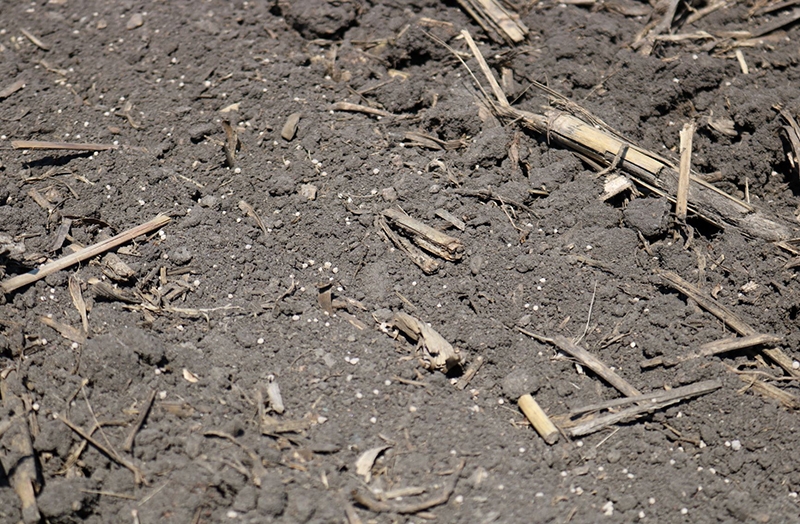Quest for Simplicity: The Latest in Agricultural Software for Retailers
Technology in agriculture created one heck of a gold rush in the industry over the past half decade. The tremors from the 2013 acquisition of Climate Corp. by what was then Monsanto quickly unleashed a tsunami of enthusiasm and investment in all things technology that has only recently begun to recede.
One of the areas to experience the biggest flush of tech investment was in data, applications, and software. Existing software companies and equipment manufacturers worked to evaluate the onslaught of products and concepts, integrate that which provided some measure of value, and then stand back as the venture capital money ran out.
After a largely painful 2019 season, this year’s calmer technology outlook as far as investment and innovation is providing some space for the predominant industry players involved in software and date to make some interesting moves toward better collaboration. And, to really focus on delivering value to the grower-trusted adviser relationship.
Time To Bring Value
Software manufacturers are hearing the calls from progressive retailers to provide tools that give growers a clearer digital window into the business they do together. Products and systems that channel the data into portals that are flexible and easy to understand is a key area of focus.
“Ag companies live more in the practical world of listening to customer challenges and delivering product that provides real value as soon as possible,” says Dave Craft, vice president of marketing with SSI, manufacturer of the Agvance line of software. “What we’re building and providing now is not the kind of work that makes big headlines; it is difficult work, but essential for us to deliver on the grower engagement and data connectivity needs that retailers want today.”
As for what the market is demanding, Craft says that more and more, especially the last couple of years, retailers have been asking for tools that help them engage with the grower. “There’s concern with companies that feature ecommerce and online store fronts, coming at product sales like the Amazon experience provides.”
Retailers feel that they need to provide the same kind of service to growers, such as when a product was shipped and when it will arrive; the kinds of constant updates that the consumer ecommerce sites deliver, he notes. Retailers are also looking forward, anticipating the increasing generational shift toward grower-customers that value self-directed, on-demand information about transactions and business activities on the farm.
“Can we satisfy the needs of these customers who are more comfortable overall with the digital experience they have grown accustomed to,” Craft says. “In particular, information delivered by phone to allow growers to check the status of work and data.”
EFC Systems’ CEO Ernie Chappell has been on the speaking circuit this past winter, urging retailers to bring value to grower customers or risk marginalization. He agrees that the digitization of the grower-retailer relationship is a challenge.
“One of the big pain points for retail is not ecommerce, but digital engagement with the grower,” says Chappell. “It’s not just bringing an Amazon experience; it’s delivering information to the grower in the way they want it. Did the application get done? Can I move the spray order from Tuesday to Thursday? These kinds of digital transactions have been available in healthcare and banking for years,” and should be part of the value retailers can provide grower-customers.
More Collaboration, Connectivity
To deliver on grower and retail demands, integration of tools and technologies, collaborations, and some acquisitions are changing the software landscape. Established companies are finding some common ground, and software capabilities continue to rise.
At a week-long gathering in January of dealers and cooperating suppliers hosted by John Deere called “Develop With Deere,” the company highlighted more than 170 companies that are in some way connecting with Deere’s Operations Center to gain access to valuable machine data. At one time such openness was unheard of but is becoming more commonplace these days.
“We couldn’t have imagined having the kind of access and cooperation with Deere a few years ago, but now we’re among the largest consumers of Deere data,” says Chappell. Other traditional rivals are more open to collaboration and sharing as well: “In general I think there’s a better tone of collaboration and willingness to work with one another.”
Software manufacturer AgWorld, a farm management platform which came to the U.S. from Australia six years ago, has grown significantly on the strength of a wide range of integrations with established software and hardware systems. Its recent acquisition of Greenbook and its extensive database of crop protection products and labels is intended to feed its growth plans in the West Coast specialty crop markets, says Doug Fitch, CEO and Co-Founder.
After last year’s nightmare season across the Midwest, retailers and grower-customers alike want to get the best possible understanding about how to drive risk down in 2020. There’s tremendous value in data integration that reduces time spent on building crop plans and broadens the amount of data being included in the plan, says Fitch. “If what we do adds work to building the plan, retailers won’t do it.”
Another company moving quickly on integration is grain management system Bushel, which most recently added Granular to its list of partner organizations. Sid Gorham, CEO of Granular at Corteva, says that Bushel’s approach of digging deep into the intricacies of how grain transactions work has been impressive. “People in the digital ag space have often focused on the bright and shiny, but Bushel really focused on getting the workflow plumbing done,” says Gorham. They’ve done the brute force work of building a system that replicates the farmer’s experience with grain, says Gorham, “and they have real momentum and are lighting up more locations every week. Anything we can provide at Granular to cut down on data entry and improve data exchange is a value.”






